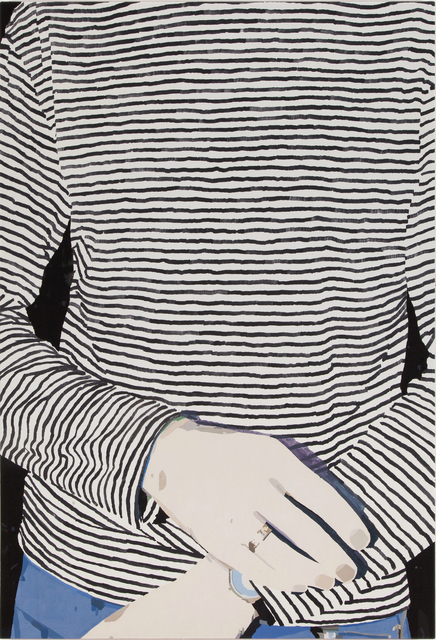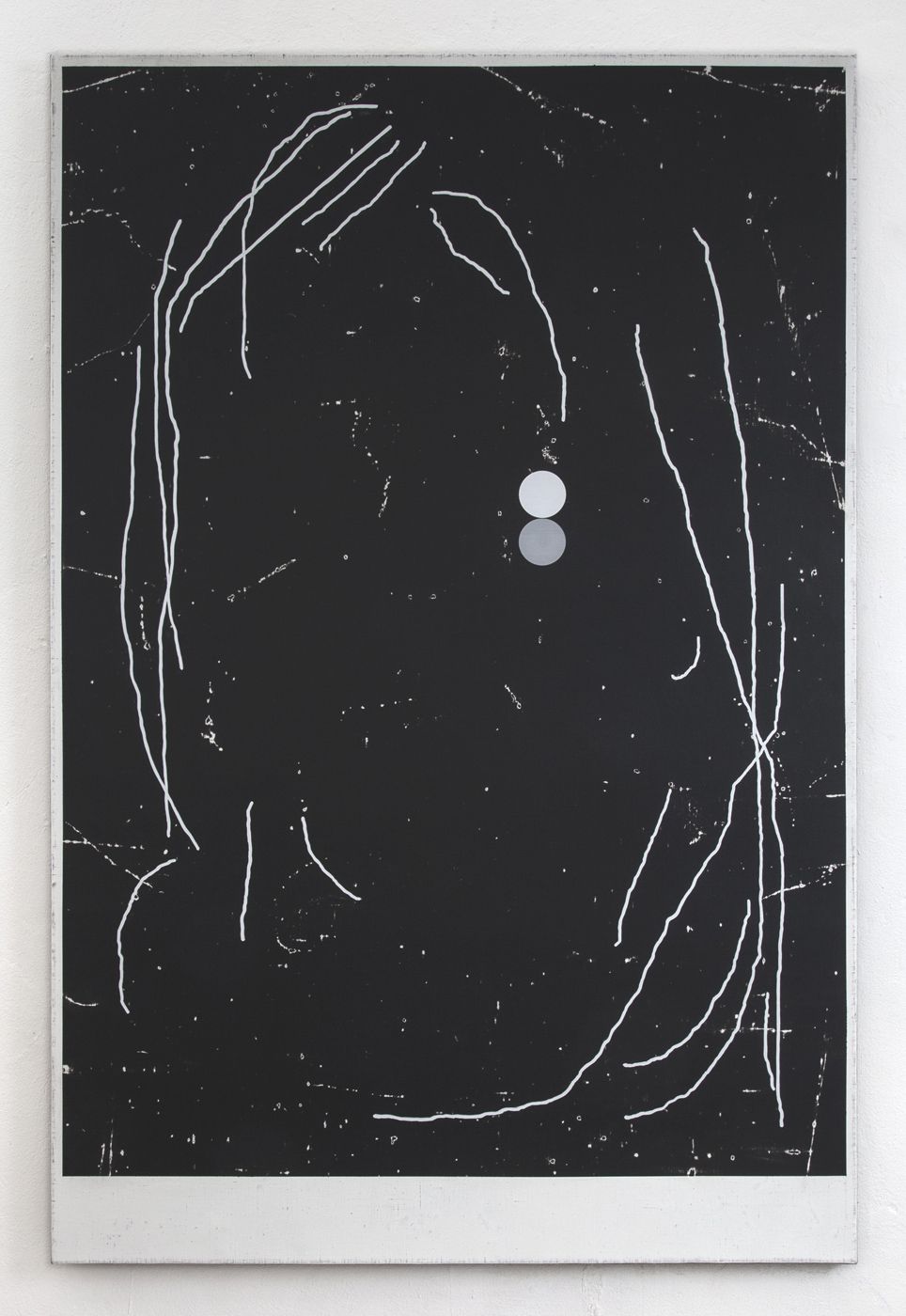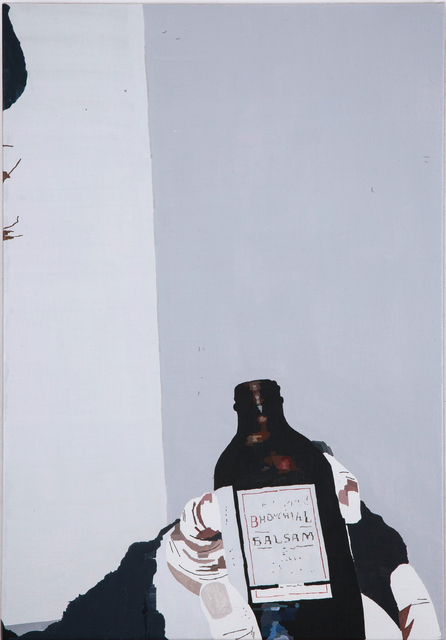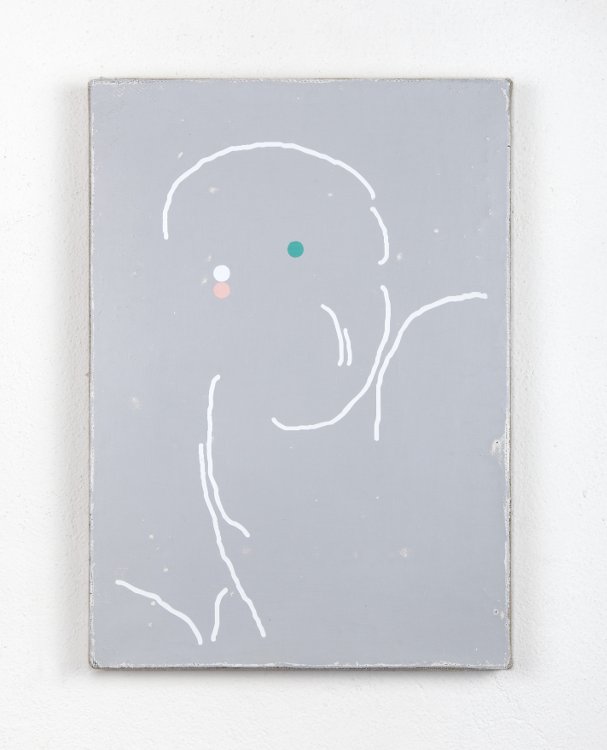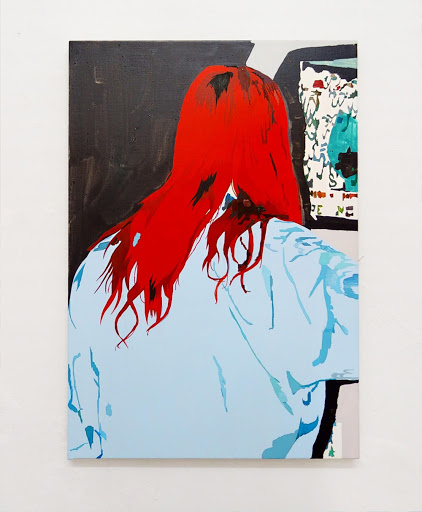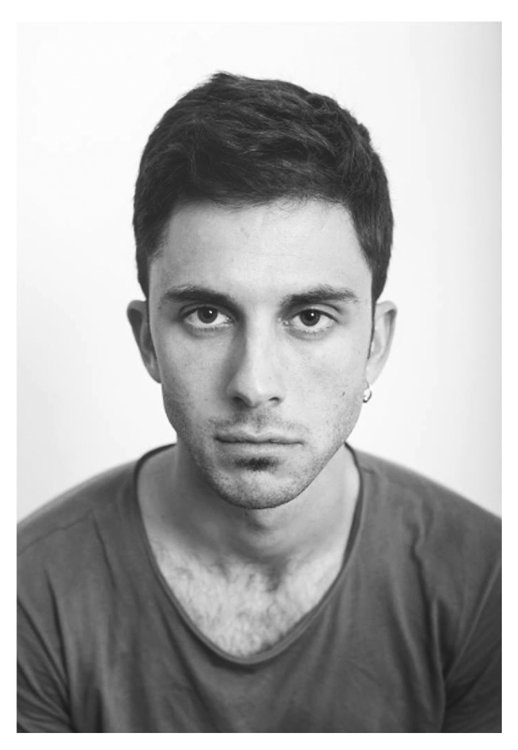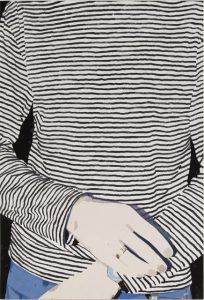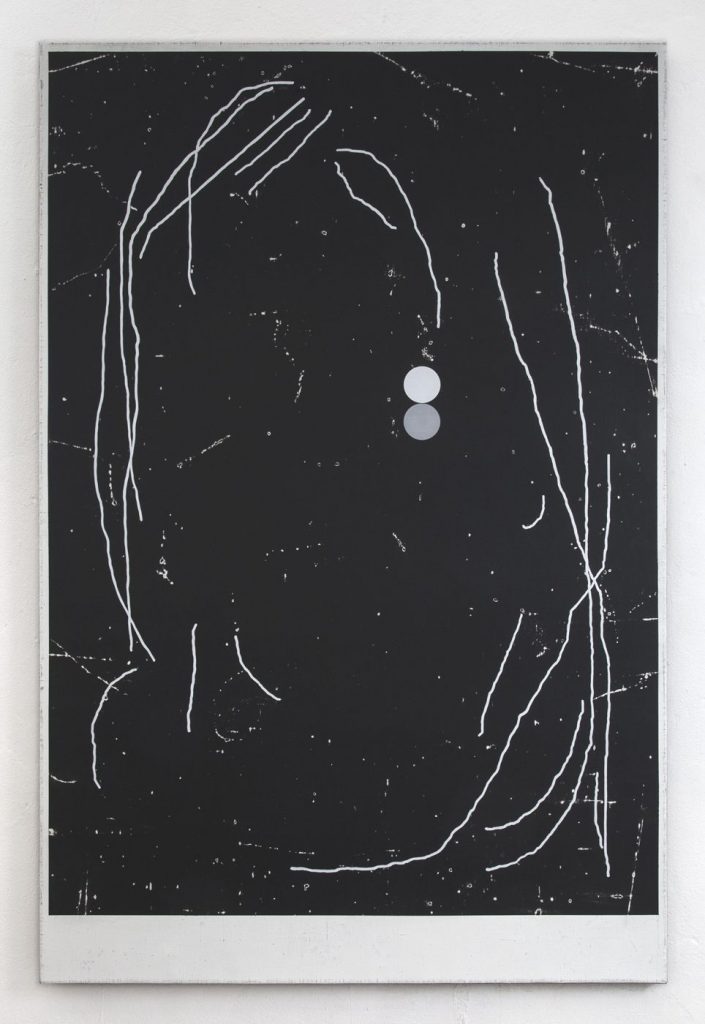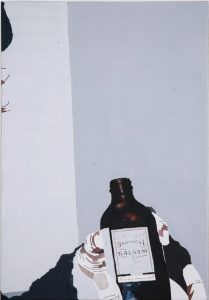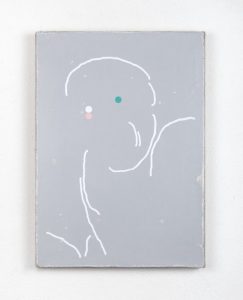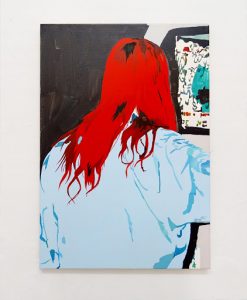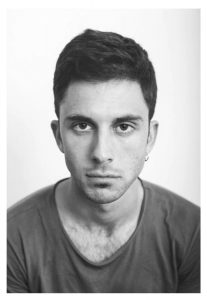Interview with the young Italian painter who experiments diverse iconographic techniques to reread the art of figurative representation.
Photography, digital image and painting are three closely linked phases through which your work is structured. Can you tell us about it?
These three elements (photography, digital image, painting) are in fact the three chronological phases around which each painting generally develops.
As for my recent series dedicated to Kurt Cobain I created a sort of archive of images found on the internet. From each individual image I select a possible photographic cut, after which begins an always rather long phase, where I reproduce the image digitally. This process is probably the most important planning stage, because I can understand how to carry out the work, or identify how many paintings I can pull out of a single photographic image. Every now and then it happens that you can’t come up with anything satisfying and work “uselessly” for hours or days. The last step is in theory a mere execution: all I do is reproducing a digital image on canvas one more time. However this is a just as crucial part and is obviously the one I love the most: to translate a digital idea into analog with all the contrasts coming from it.
At first your research was linked to a figurative representation, then it led you to creating works where the human figure is literally eviscerated. In Minimum Portraits, in fact, the figure is reduced to points and lines, coordinates. What brought you to such a radical transformation?
This would be a very long story to tell, but I think I can sum it up in this way. I am deeply attracted to the infinite forms of painting and at some point in my life I wondered what I really wanted to paint. At the same time I have never felt a clear preference between the two large fields of this medium (figuration / abstraction) and therefore I started looking for a way to hybridize the two forms. This kind of approach has obviously caused sudden changes of course until today. What has happened during all this time? I realized that it is impossible for me to separate from a figurative origin, but at the same time I also understood how a figurative painting can be done with a completely abstract approach.

The genre of the portrait is the one that represents you the most, and very often it has an autobiographic connotation. What does this artistic procedure represent? Observing your works, you have the feeling that, by portraying the subjects of your experience, you want to give back to the observer something of yourself hidden under the surface.
I’d rather say that I need to represent something I know or that belongs to me, or maybe because one day I can say that I made a lifelong self-portrait.
Your last project, presented at the exhibition In my room at The Flat – Massimo Carasi gallery, is inspired by the figure of Kurt Cobain. A corpus of works in which the story represents a décadrage on the daily and familiar details and actions of the American musical icon, such as smoking a cigarette. In these paintings, moreover, there is a more in-depth study of color. The tones become darker, black and blue are dominant, giving an intimate but at the same time a bit melancholic depiction. How did this project come to life and develop?
It started out as a joke, in a time when I did not know what to do exactly. In fact, I portrayed the famous hat of Kurt Cobain and at that time I probably realized that that stupid little hat was suggesting something to me that I had to deepen.
Who are the artists who inspired you?
They are many. I can never get a clear idea of who are my reference artists because I have never been able to figure out who my favorite artists or painters are. And to be honest, I try to absorb a lot from other areas too. I am, in fact, a devourer of anime and manga, so muc that an experienced eye can certainly notice some technical references. Said that, it is true that after the age of 30 I can realize that some names have remained deeply connected to me: Henri Matisse, Domenico Gnoli, Laura Owens, Alex Katz, Katsushika Hokusai.
What are your future plans? We know you are working on a series of paintings dedicated to another icon, but this time on the fringes of the American artistic and musical subculture, that is Daniel Johnston. Can you tell us something?
For two months now it is really complicated to understand what are the future plans of the whole world, and in this moment any type of defined program can blow up from one day to the next. I can tell you that I’m creating some new series and that I’m actually working really well. A year ago I started working on a project about Daniel Johnston, a figure that attracted me so much and that can be considered closely related to Kurt Cobain. I got in touch with him and his brother two months before Daniel died and this event touched me particularly. I don’t want to continue this series without an appropriate opportunity, but I’m pretty sure that it will show up sooner or later.
Biography: born in 1988, Andrea Carpita lives and works in Carrara. He attended the Painting Course at the Academy of Fine Arts under the direction of Omar Galliani and Fabio Sciortino, graduating in 2015. He participated in numerous solo and group exhibitions in Italy, at the Luigi Pecci Center for Contemporary Art in Prato, the MAC Museum of Contemporary Art of Lissone, and exhibited in Paris, Brussels and New York. His works are included in the collections of Raphaelle Blanga, contemporary art expert at Sotheby’s, of the collector Claus Busch Risvig, and in the Coppola Collection of Vicenza. In 2016 he was artist and curator of a special project created for the exhibition In the Depth of the Surface at Fabbrica Orobia 15 in Milan, and in 2018 at the Pablo’s Birthday Gallery of New York.
